Artwork at Ruptco Designs
Welcome to our artwork page, here you can learn a little about the cars we have created artwork for.

Mitsubishi Evolution V GSR
The Mitsubishi Evolution or "Evo" is one of many high performance saloons (sedan) that took the world by surprise in the early 90s. With its four wheel drive system and turbo charged engine the EVO could take off with brutal pace.
The Evo became a force on the Ralley stage in the hands of Tommi Mäkinen despite being a homologated Group A car modified to WRC regulations finding a rivalry with the Subaru Impreza. The Evo also dominated the early years of Time Attack being the car of choice making Mitsubishi a household name and gaining fans around the world.
The Evo V engine (4G63T) was a 2L 16v inline 4 turbo engine producing 276bhp and 280ftlb reaching 60 in 4.7 seconds. The 4G63 engine powered 9 of the 10 generations of Evo where each generation improved on the previous model refining and fine tuning the formula whilst increasing the power.
The Evo lent its engine and running gear to the Eclipse GSX which would go on to kick start the tuner / import scene in America, Legend.
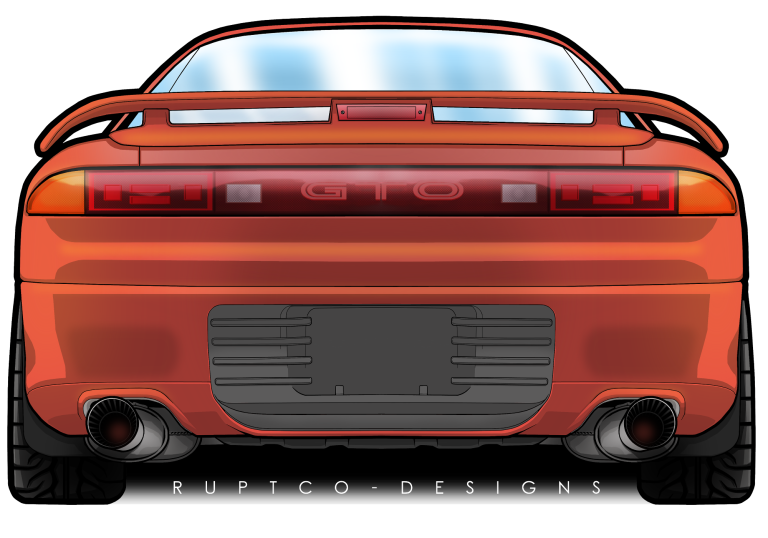
Mitsubishi GTO / 3000GT
The Mitsubishi GTO / 3000GT was the companies halo car at the beginning of the 1990s, the most advanced car Japan had ever produced. As a grand tourer (Gran Turismo Omologata) it was intended to travel long distances in comfort and at speed. With the looks of a Ferrari and performance to match it captured the worlds attention, the GTO name being revived from the Galant GTO originating with the Ferrari 250 GTO. One notable feature of Mitsubishi's GTO was the hour glass body shape narrowing at the doors.
The engine was a 3L V6 24V twin turbo twin inter-cooled produced 320bhp (280 on paper) 308ftlb at 2.5k. It could do 0- 60 in 4.7 seconds and go above 160mph. One thing that separated it from the other legends is the turbos were tandem and not sequential.
It had 4 wheel drive, 4 wheel steer, abs, tcs, lsd, cruise control, active aero, active suspension, active exhaust, driver air bag, side impact bars, seat belt pre-tensioners, electronic lumbar control, automatic aircon and more. Despite its weight of around 1700kg it could hit
From the 2nd generation (facelift) onward Mitsubishi Introduced the MR (Mitsubishi Racing) which had the active elements removed to bring the cars weight down to 1680kg and a 6 speed gearbox was added. These changes made the GTO MR the quickest twin turbo of 90s japan.
The GTO was designed to be a car that anyone could drive fast and safely with a neutral handling characteristic 45/55 torque split and active areo its high speed stability couldn't be matched by any of its rivals.
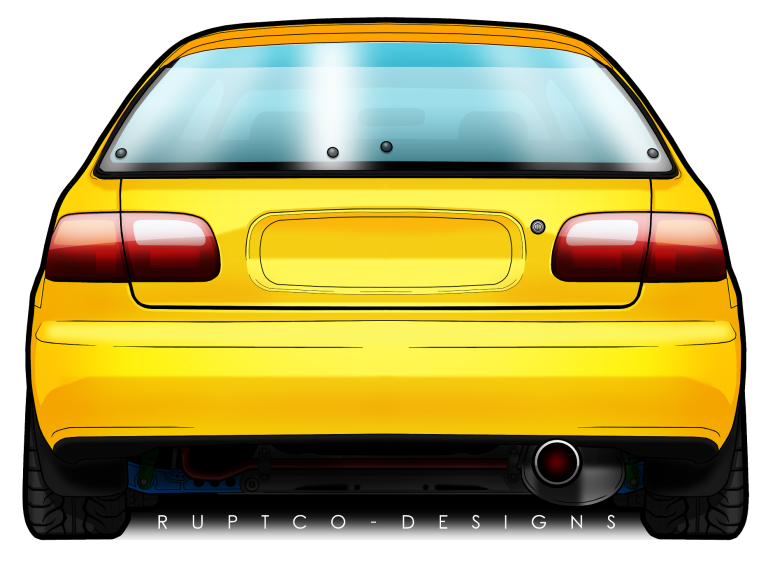
Honda Civic - EG
The humble EG Civic was the fifth generation of Honda's subcompact car offering high levels of equipment at an affordable price. The original Civic had been Honda's breakthrough success in the export market.
unappreciated in its time the EG Civic came with independent rear suspension, split tailgate and 130bhp from a 1.6 VTEC engine.
The EG civic is highly sough after for its light weight and excellent chassis, with independent rear suspension it was the perfect base to be upgraded for track use. Engine swapping is common with the K20 and B18 being the desired routes. The stock D series engine makes 130bhp from 1.6L 8v which is a respectable achievement but add a turbo and the D series comes to life.
For along time the EG was a track staple as they were super cheap to pick up and swapping in a K20 from a DC5 Type R into its light body turned it into a weapon, add a turbo and you have a super car killer.

Nissan 300ZX / Z32
As Nissans halo car it was a technical power house, Its 3L twin turbo VG30DETT engine produced 300bhp (280 on paper) and 285ftlb at 3.6k it could get to 60 in around 5 seconds. The 300ZX was the first car to be subjected of the 280bhp 'gentleman's agreement' (JAMA imposed power ceiling) that would limit, on paper atleast the power of these new generation of perfomrance cars throughout the 90's. This power limit was implemented through restrictive exhaust systems making them the first part to be changed when searching for power.
It came with HICAS 4 wheels steering, ABS, 2 mode adjustable suspension, airbags, aircon, cruise control and was available as a 2 seater and 2+2.
The 300ZX is most famous for its headlights that were thought not possible at the time due to the low angle and would be licensed to Lamborghini for use on the Diablo.
Remembered by most for its appearance in motorsport and for its performance at the Bonneville Speed Trial where the JUN-BLITZ Z32 hit 260.87mph the 300zx has become a much loved legend.

Honda NSX
The Honda NSX was Honda's entry into the sports car market targeting the Ferrari 328/348 with a MR layout and sleek coupe body.
Honda spared no expense in developing the NSX with it being the first production car to have a full aluminum chassis saving 200kg over steel. The engine was a 3L 24v V6 with VTEC producing 250bhp (3.2L 290bhp 0-60 in 4.5 by the end of its run) and hitting 60 in 4.9 seconds.
Ayrton Senna worked with Honda on fine tuning the suspension and handling with the chassis stiffness increasing by 50% by the end of the process. Initially people were skeptical about Honda's ability, the car was praised for its poise and performance becoming a benchmark.
The NSX was the first car to show that the Japanese were not only able to match Ferrari's performance and styling but do so with better build quality and reliability. The Honda NSX is considered the very peak of the 90s JDM cars.

Toyota Supra MK4
The Toyota Supra Mk4 is possibly the most widely known JDM car from is appearance in film, games and Motorsport.
At its time of release the car proved to be controversial amongst fans, gone were the sharp angles and pop-up headlights of the 80's with the car embracing the new softer rounded design of the 90's.
The design was not the only thing to change, gone was the 1JZ and in was the all new 2JZ-GTE. The new improved engine was a 3L inline 6 24v sequential twin turbo producing 320bhp (280 on paper) and 314ftlb at 4k it could reach 60 in 4.9 seconds. No one realised that Toyota had heavily over engineered the engine until it hit the hands of modified work shops being able to take 1000bhp with stock internals.
The Supra played a large part in the JGTC GT500 and other series being the first car to challenge and then beat the dominant GTR. The Castrol TOM'S car became the unofficial mascot of the Gran Turismo games featuring in promotional material and at the opening on Gran Turismo 3.
Outside of Motorsport the car was brought to the masses via the Fast and Furious film in 2001 wearing a now iconic orange livery and for racing a Ferrari F355.
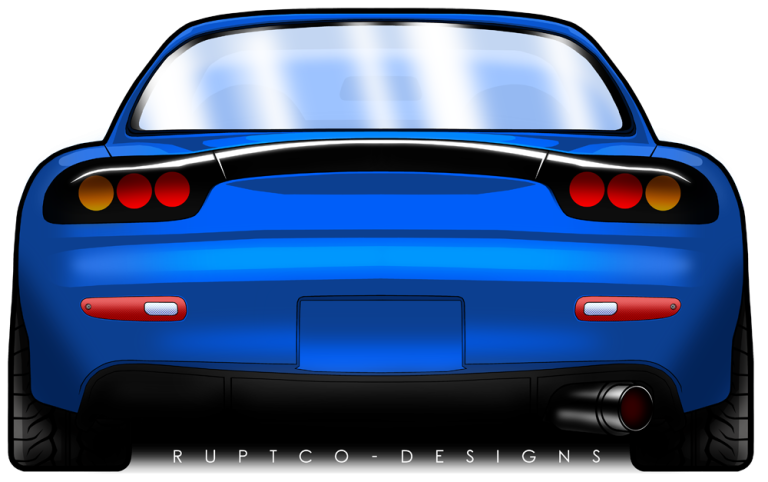
Mazda RX7 FD
The Mazda RX7 was as unconventional as it was stunning. Released in 1991 its smooth body was captivating from every angle, a timeless design that hasn't aged a day.
The RX7 was different the other JDM legends in a few ways, Mazda had focused on the power/weight with the RX7 weighing 1200 -1300kg, 200 - 300kg less than the other twin turbo cars. Mazda also used a Rotary engine which they had been perfecting over a number of years.
The 13B-REW twin turbo Rotary engine fitted to the RX7 was the first ever to be mass produced and exported from Japan. From its 1.3 displacement it produced 255bhp and 217ftlb (276bhp and 231ftlb by the end of its production) with a 0-60 of 4.9 - 5.1 seconds.
The RX7 found its home in Motorsport with its power / weigh balance giving it great poise and nimble cornering ability. The RE Amemiya built RX7 being a dominant force in the GT300 placing at the top against factory teams.

Nissan R32 Skyline GT-R
Nissan's R32 Skyline GT-R or R32 GT-R (Gran Turismo–Racing) was the companies return to the name after 16 years in a bid to improve their performance on track, as such the car was designed to race from the ground up.
The return of the name required a new car to match its history, Nissan's approach was performance though technology. This new generation of Skyline had a 2.6L inline 6 24v twin turbo producing 320bhp (276 on paper) and 260ftlb at 4.4k it could reach 60mph in 4.8 seconds.
In the pursuit of cornering performance Nissan fitted the GT-R with:
- ATTESA E-TS - an electronically controlled AWD system with torque vectoring this allowed the front wheels to engage when slip was detected (even differing torque to each of the four wheels as needed) and still maintain the cornering advantage of a RWD car.
- HICAS - Nissan's 4 wheel steer system allowing the car to turn tighter and grip for longer through corners allowing for higher cornering speeds than conventional cars.
The R32 GT-R dominated Group A in the Japanese Touring Car Championship winning every race it entered between 1990 - 1993
The Godzilla name was coined from its performance in the Australian Touring Car Championship. Nissan had proved that fine tuning performance through technology could overcome the brute force tuning of the V8 race cars.
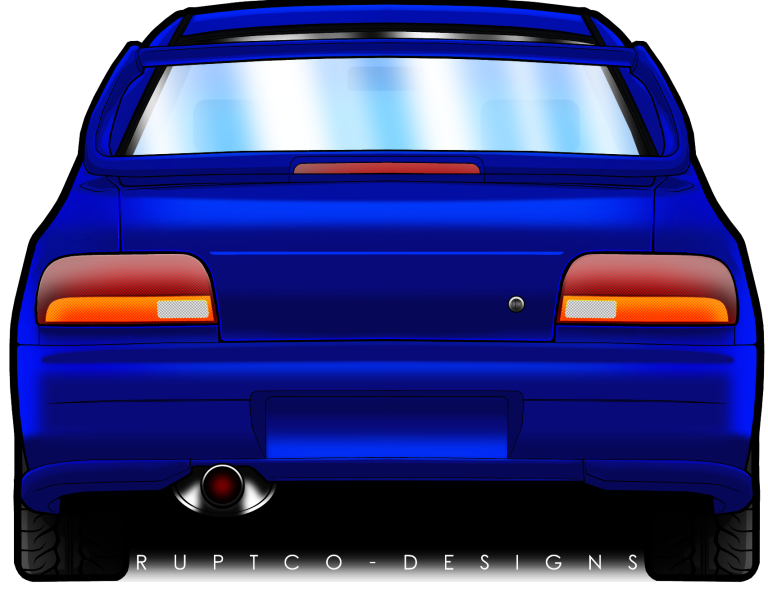
Subaru Impreza WRX STI - GC8
The first generation Impreza helped transform Subaru's image from a cheap hatch back maker and seller of 4x4s at agricultural showrooms to a performance car manufacturer. The WRX STI was a 5 door saloon (sedan) which was capable of 150mph and 60 in 4.8 seconds with an unmistakable engine note, super car performance for a fraction of the price.
The STI version engine (EJ20) was a 2L flat 4 16v turbo making 271bhp 235ftlb at 3.5k. The 2L displacement cap was to meet homologation rules for the WRC Ralley which it won in 1995 driven by Colin McRae in what would become the iconic 555 livery.
It would feature in Anime Inital D as the car chosen by Takumi's dad to present an 'unbeatable' opponent to teach him about 4WD turbo cars and see if he can figure out how to overcome its advantages.
The Impresza and Evo were rivals spurring each other to always improve. The Evo was 'sharper' more performance focused at the cost of daily comfort where as the Impreza was set up to be 'softer' and more usable on a daily basis.
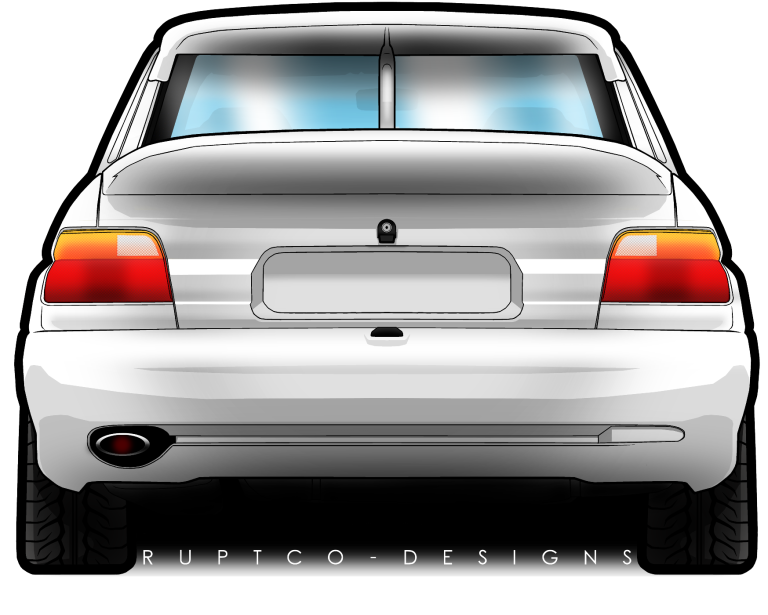
Ford Escort RS Cosworth
The 5th Generation Ford Escort RS Cosworth continued the long line of fast Fords that put high performance in the hands of the working man, at one point being the most stolen car in Britain.
The Cosworth YBT 2L turbo engine produced 224bhp and 224ftlb at 3.5k, allowing it to hit 0-60 in 5.7 seconds and on to a top speed of 150mph. The car had permanent 4WD with a 34/66% front rear split.
The Escort RS Costworth was developed as a homologation special Group A car for the WRC. It was "based" on the road car but had its origins in the Sierra Cosworth having Escort panels on top of a Sierra shell. This gave Ford a larger engine bay for the Cosworth Engine and gearbox, being mounted longitudinally to send power to the rear where as the base escort was FWD (front wheel drive) and didn't initially have the 4WD floor pan needed.
The Escort RS Cosworth was hugely successful on the Ralley stage with 8 stage wins in the WRC between 1993-1996 and 34 wins at the National and European level between 1993-2002.

Vauxhall Astra VXR
Vauxhall (Opel) introduced their answer to the Focus ST in 2005 with the Astra VXR. Based on the fifth generation Astra the VXR followed in the steps of the Astra GTE combining daily comfort and reliability with high performance. Vauxhall introduced a VXR only colour, Arden Blue.
The Z20LEH engine is a 2L 4 cylinder turbo producing 238bhp and 236ftlb getting to 60 in 6.2 seconds and a top speed of 152mph.
The top model was the Nurburgring edition of which there were 835 made. The engine having an additional 15bhp, now could reach 60 in 5.8 seconds. Vauxhall changed the exhaust system to give it a deeper note. It also came with a lighter Brembo brake setup and rode 20mm lower on Bilstein suspension, all these changes sharpened the steering and improved the overall agility of the car.

Vauxhall VX220
Vauxhall VX220 (opel speedster) was a joint venture between Vauxhall and Lotus with Vauxhall getting their own 2 seater mid engined RWD sports car and Lotus getting the money they needed to develop a 2nd generation of the Elise to meet the 2000 European safety regulations.
Although based on the same car the VX220 used a GM 2.2 Ecotec engine, it also had a 30mm longer wheel base and lower sills than the Lotus. The VX220 used an aluminum frame and fiberglass body to keep its weight down to 875kg for the NA and 900kg for the turbo car.
The 2.2 16v inline 4 cylinder engine produced 147bhp 149ftlb, 0-60 in 5.6 seconds and a top speed of 135mph. The 2L 16v turbo inline 4 cylinder engine produced 197bhp 184ftlb, 0-60 in 4.9 seconds and a top speed of 151mph.
In 2004 Vauxhall released the track focused VXR220 for the UK market. Vauxhall fitted bigger brakes, better tyres, staggered wheel sizes - 16" front 17" rear Speedline alloys, lower suspension. The power was also increased to 220bhp although the top speed was the same the 0-60 came down to 4.7 seconds and it only came in Calypso Red.
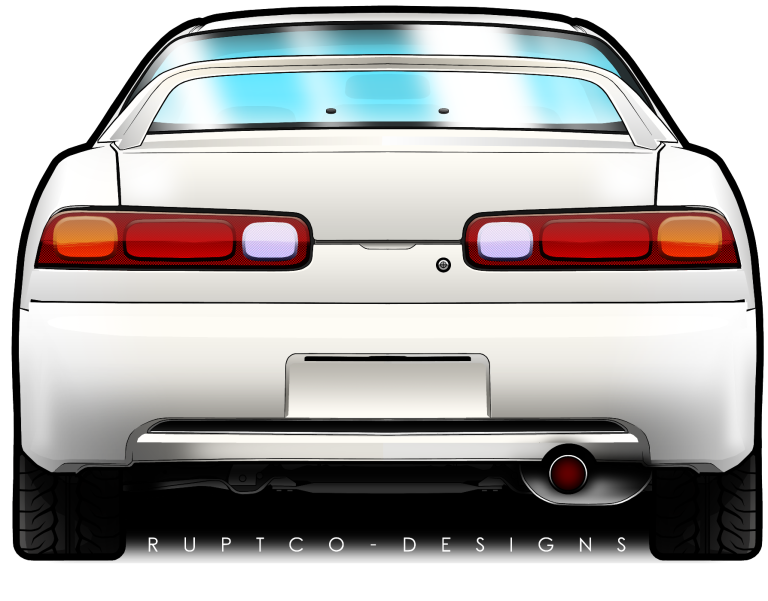
Honda Integra Dc2 Type R
Honda Integra Dc2 Type R released in 1995 based on the 3rd generation Integra (1993) it proved to the world that FWD was viable to be performance cars.
Honda had made many changes to the standard car to create the Type R, going back to the very core of the car strengthening the chassis with extra spot welds and increasing the thickness of the strut tower metal and lowering the sub frame and suspension changes greatly improved stability when cornering. Weight was saved with less sound insulation, reducing the thickness of the windscreen by 10% and lighter wheels.
The engine was not missed out in this transformation receiving more power and an increased rev limit to 8.7k. The engines were hand built with hand polished and ported intake ports, undercut valves, high compression pistons and revised intake and exhaust systems.
The B18c5 1.8L 16v VTEC engine produced 187bhp with 131ftlb. it could reach 60 in 6.2 seconds and had a top speed of 145mph through a close ration 5-speed gearbox with LSD (limited slip differential)
All of these changes made the Integra Type R incredibly well balanced and stable when cornering almost eliminating the under steer characteristic FWD cars are known for allowing it to corner faster and grip for longer than its competitors.
The Honda Integra Dc2 Type R is recognised as being the greatest handling FWD car ever.


© Copyright. All rights reserved.
We need your consent to load the translations
We use a third-party service to translate the website content that may collect data about your activity. Please review the details in the privacy policy and accept the service to view the translations.
